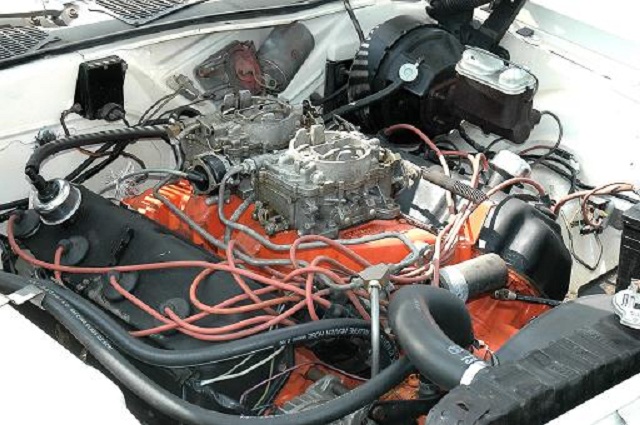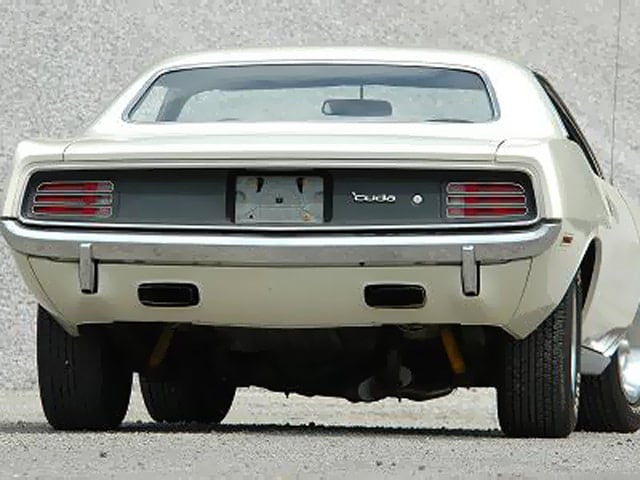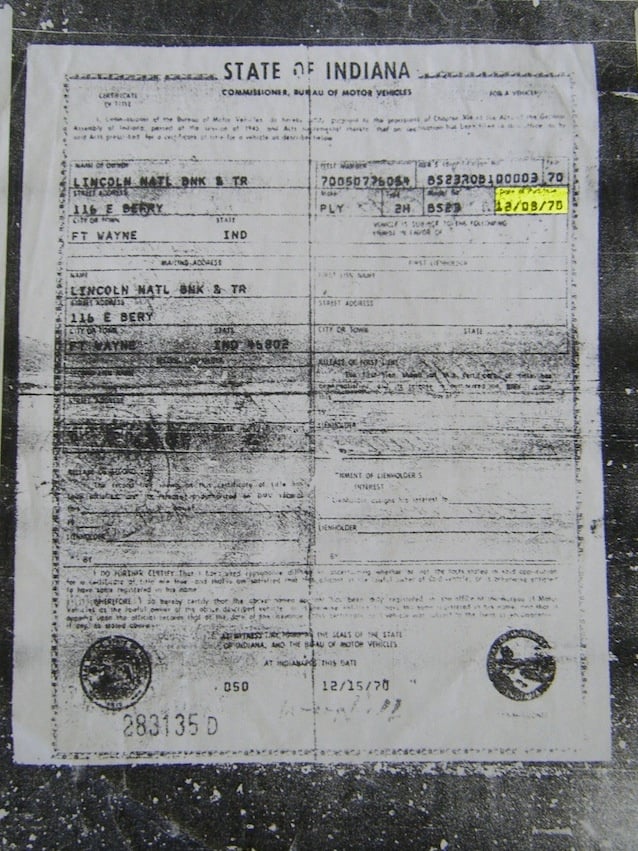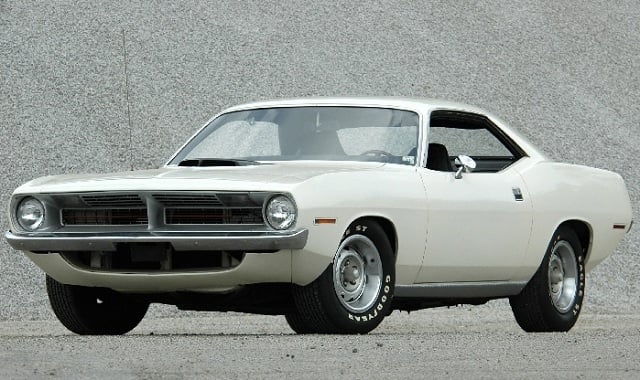Just a few years ago the collector car market was soaring, with even plain Jane muscle cars fetching tens of thousands of dollars more than they should have. But when it came to the real top-dollar cars, few vehicles drew as many big bids as HEMI-powered products from they heyday of the muscle car. These cars are for many collectors the creme de la creme of their collections.
So how did a humble barber from Indian end up with the very first HEMI ‘Cuda? And why on Earth would he trade it for a BMW Isetta (among other “interesting” cars).
That’s the story of Gary Dodane, a self-described “Indiana boy” who makes a living cutting hair. Gary purchased the first Plymouth HEMI ‘Cuda 29 years ago, and he contacted us after we found his $3 million car for sale online. The journey of how Gary came across this special car is one for the ages.
A Spot of HEMI History
First, a history of HEMI cars. In the 1950’s, Chrysler unveiled a line of Firepower V8 engines that made use of the hemispherical combustion chamber design. By the mid-60’s the HEMI engine would re-appear as Chrysler’s main weapon against the big-block V8’s of Ford and General Motors.
Yet it wouldn’t be until 1968 that the first HEMI engine found its way into Plymouth’s compact offering, the Barracuda. In its second generation by then, Chrysler equipped just 50 Barracuda’s with 426 HEMI engines and fiberglass front fenders for use in the Super Stock drag racing series. In 1969 Plymouth shortened the Barracuda name to just ‘Cuda for top performing models, which were available with either the 340, 360, 383, or 440 “Super Commando” engines. But no HEMI.
This HEMI 'Cuda lacks many of the distinguishing features of the cars, like the hockey-stick stripes and chrome hood pins.
For the 1970 model year Chrysler developed an all new E-Body platform that they hoped would shake the economy car stigma that had plagued the Barracuda (and its corporate cousin, the Dodge Dart) for years. Part of this “upscaling” was making the 426 HEMI engine available in the Plymouth ‘Cuda, resulting in the creation of the famed HEMI ‘Cuda that so many collectors find desirable, due in large part to their relative rarity.
 [5]
[5]It might not look like much, but an original AM/8-track radio is a rare piece of equipment that not many cars came with in 1970. It's not like you could really enjoy that Cat Stevens tape over the sound of the HEMI anyways...
Just over 650 HEMI ‘Cuda coupes were built for the 1970 model year, and just 108 in 1971.The only car rarer are Plymouth HEMI ‘Cuda convertibles; in 1970 only 14 droptops were built. In 1971, only seven Plymouth HEMI ‘Cuda convertibles left the factory.
Striking When The Iron Is Hot
Back in 1983, while a 1970 HEMI ‘Cuda was a cool car, most people considered an inefficient 13-year old car. As Gary tells it, back in 1983 his sister was dating a guy who owned this ’70 Plymouth HEMI ‘Cuda.
Almost 30 years ago, the collector car market for muscle cars had yet to mature, so it was just another nice, low-mileage 13-year old car. Gary wanted to buy the HEMI ‘Cuda, but the boyfriend rebuffed him time and again. Then the day came when the boyfriend needed the money more than the car, and Gary eventually hashed out a deal for the car. “Brand new, this car cost about $4,000, so when you figure in depreciation, you can figure that I paid less than that for the car. But at the time I thought it was a lot of money.”
It's the slight details that made this first-ever HEMI 'Cuda so very interesting, like the lack of a side 'HEMI' stripe or the gloss black Shaker hood rather than the usual argent silver.
On any given day, a Plymouth HEMI ‘Cuda is worth a whole lot of money. These cars, when they do change hands, usually go for well over $150,000. An even-rarer HEMI ‘Cuda convertible could go for over $300,000 these days. But back then these cars weren’t even worth the $4,000 they cost when brand new.
I saw more 0’s than there should be. I had never seen that many zeroes in a VIN tag before.
Then Gary checked the VIN tag. “I saw more 0’s than there should be. I had never seen that many zeroes in a tag before,’ says Gary. A friend told him to contact Galen Govier, a Mopar guru who could decipher a VIN tag from memory. After a few weeks, Govier got back to Dodane and told him, “You might want to sit down for this.”
Govier told him that the 1970 Plymouth HEMI ‘Cuda he had was the first of its kind, the original hand-built pilot car, a car nobody even thought ever left the factory floor. It was built on August 1st, 1969, before any other HEMI ‘Cuda came off the assembly lines. It was the pilot car, which any collector can tell you means big bucks on the auto auction circuit.
The documentation - including the original fender tag and VIN made a convincing case for Mopar VIN code master detective Galen Govier, who signed a writ of authenticity a few years back.
After a year and a half in the hands of Chrysler engineers, the first HEMI ‘Cuda passed through the hands of five unsuspecting owners over the next 13 years. In that time the car racked up less than 18,000 miles. “I contacted all the old owners, and they told me the reason the mileage was so low was because they couldn’t afford to drive it,” says Gary with a chuckle. “That was when gas was 60-cents a gallon.”
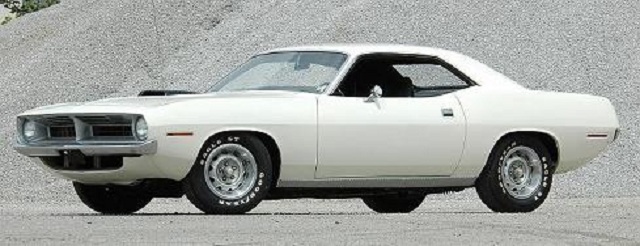 [11]As we already mentioned, the collector car market for these cars had yet to mature back in 1983. So rather than try to flip it for a quick buck, Gary stored it away, occasionally taking it out for a drive down the street. The car was a true survivor when Gary bought it, the same as the day it rolled out of the Chrysler factory. The only thing Gary did to the ‘Cuda was give it a correct re-spray.
[11]As we already mentioned, the collector car market for these cars had yet to mature back in 1983. So rather than try to flip it for a quick buck, Gary stored it away, occasionally taking it out for a drive down the street. The car was a true survivor when Gary bought it, the same as the day it rolled out of the Chrysler factory. The only thing Gary did to the ‘Cuda was give it a correct re-spray.
“That shows how green I was back then,” says Gary, though he maintained the Alpine White color.”I doubt the paint job has seen ten hours of sunshine since I painted it,” Gary says.
In 1995 Gary downsized his home and no longer had storage for the HEMI ‘Cuda. He decided to put it on loan to the National Automotive And Truck Museum in nearby Auburn, Indiana. “Every two weeks I’d go down there and sit in it and start it up, just to keep it lubricated,” says Gary.
 [12]In the 29 years he has owned it, Gary has put just 30 miles on the odometer. Not many people can display that kind discipline, but Gary hopes it will all pay off. And through it all, Gary has kept meticulous documentation, much of which is on display at the car’s dedicated website [13].
[12]In the 29 years he has owned it, Gary has put just 30 miles on the odometer. Not many people can display that kind discipline, but Gary hopes it will all pay off. And through it all, Gary has kept meticulous documentation, much of which is on display at the car’s dedicated website [13].
He has listed the car for sale on Craigslist and other websites for as high as $3.33 million, though Gary has an interesting list of cars he would gladly trade it for. “If someone were to offer me any or all of these cars in trade, I might be willing to make a deal,” says Gary.
Among the oddball automobiles; a BMW Isetta (the same car one Steve Urkel used to drive), a Messerschmidt KR200 three-wheeler, an Amphicar, a pre-1962 23-window Volkswagen Bus, and a Limelight Green Plymouth Superbird. “The thing about little cars,” says Gary. “Is that you can store a lot of them in a little place.”
Wise words indeed from a simple Indiana boy who had more foresight (and luck) than most people in the collector car world. The world has Gary Dodane to thank for preserving this special car, and hopefully the next collector takes on this honor with as much zeal as Gary has showed these past 29 years.
CHECK OUT OTHER MUSCLE CARS YOU SHOULD KNOW
- ’69 AMC Hurst SC/Rambler [14]
- ’68 Mr. Norm’s Dodge Dart GSS 440 [15]
- ’70 Mark Donohue-Edition AMC Javelin [16]
- ’97 [17]Lingenfelter-Built [17]Hurst/Pontiac Firebird [17]
- ’62 Ford Galaxie 406 Lightweight [18]
- ’64 Mercury Comet 427 A/FX [19]
- ’68 Chevrolet Chevelle 300 327 L79 [20]
- ’69 1/2 Plymouth Road Runner 440-6 #1 [21]
- ’67 Buick California GS [22]
- Dick Landy’s ’70 HEMI Dodge Challenger R/T [23]
- ’70 AMC AMX/3 Supercar Concept [24]
- ’71 AMC Matador Machine 401 [25]
- ’67 Plymouth [26]HEMI [26]GTX “Silver Bullet” [26]
- ’71 Baldwin Motion Phase III GT [27]
- ’63 Chevrolet Z11 Impala 427 [28]
- ’64 Chrysler Ghia Turbine Car [29]
- ’63 Pontiac Catalina Lightweight 421 [30]
- ’69 Mercury Cougar BOSS 429 [31]
- ’69 Royal Bobcat Pontiac GTO Ram Air V [32]
- ’87 Buick Regal GNX [33]
- ’69 Ford Mustang BOSS 302 George Follmer’s #16 [34]
- ’69 Ford Mustang BOSS 429 [35]
- ’69 Dodge Charger Daytona #88 [36]
- ’69 Motion Chevrolet Camaro Z/28 427 ZLX [37]
- ’69 Motion Hurst/Oldsmobile 455 [38]

